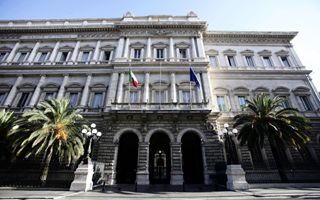(Finance) – “To facilitate the ecological transition, during 2023 the thematic portfolio established in 2022 was expanded – focused on euro area companies engaged in activities instrumental to the transition towards a low-emission economy – and dialogue continued with the companies responsible for a large part of the greenhouse gas emissions attributable to the share portfolio”. This is what the Bank of Italy In the “Annual report on sustainable investments and climate risks”.
In terms of securities issued by States, supranational bodies and public agencies, the Bank of Italy highlights that ““purchases of green bonds continued”. At the end of 2023, the report specifies, the market value of Bankitalia’s investments relating to the financial portfolio in euros, foreign exchange reserves and the supplementary pension fund was equal to 189.1 billion euros, “mainly employed in government bonds of the euro area and of the countries that issue the main currencies, in consideration of the safety and liquidity characteristics of these instruments”. And, in particular, as regards the financial portfolio, “the share of sustainable bonds, the purchase of which began in 2020, grew in the period under review to reach 4% for government bonds, 24% for supranational and agency securities and 5% for corporate bonds”.
Bank of Italy reminds you that it integrates financial and sustainability objectives into its investment policy. “The former are of a traditional type, i.e. they concern the containment of financial risks and the prudent search for returns” while the latter “consist in inserting sustainability information into the analysis” with the dual purpose of improving the risk and return profile investments, and to contribute to environmental protection and sustainability.
Even in the risk management the central bank aims to balance sustainability objectives with traditional ones (return, low risk and liquidity) and for portfolios of shares and corporate bonds “favors companies with the best ESG practices and those most committed to the climate transition”.
As far as I’m concerned government bonds, via Nazionale ensures that “the gradual expansion of the share of green bonds in the financial portfolio and in foreign exchange reserves allows us to improve the sustainability profile of investments without significant negative effects in terms of risk and return”. However, Bankitalia recalls that it is committed to “periodically reviewing the investment strategy to ensure that it contributes, in compliance with the institutional mandate, to the pursuit of both the objectives of the Paris Agreement and those of climate neutrality by 2050 established by the European Union” .
The actual achievement of these objectives is, however, conditioned by numerous factors, for which the Bank “considers it preferable not to make explicit short and medium-term climate objectives for its portfolios, while remaining firmly committed” to the climate and the environment.
